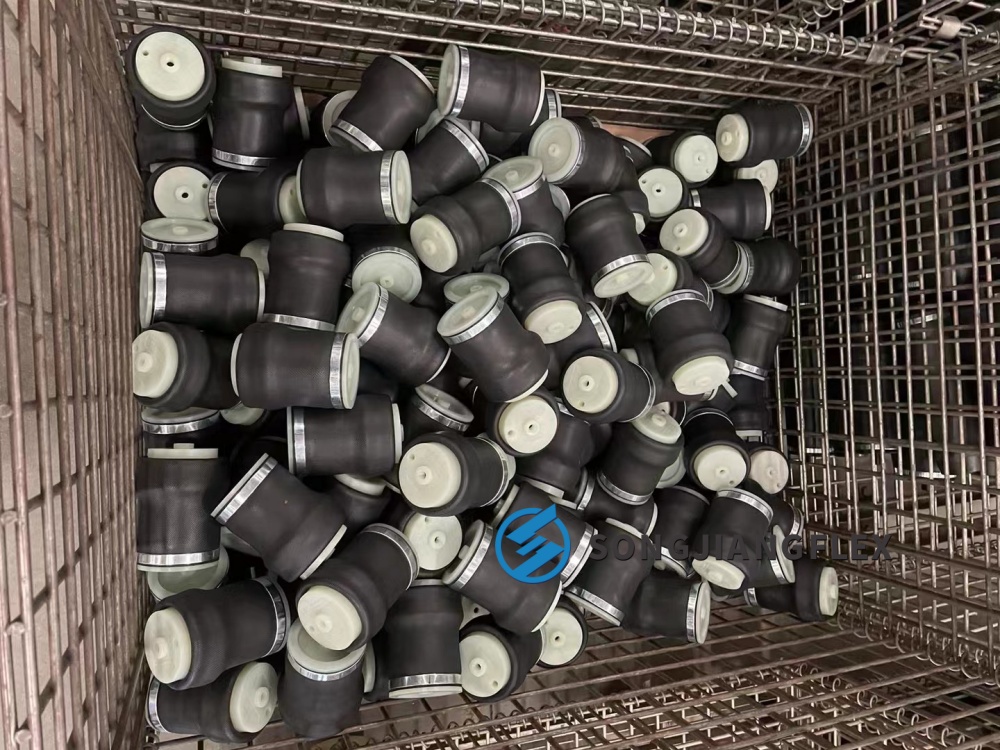What Are the Advantages of Using Air Springs in Rail Transit Systems?
Rail transit systems face constant vibration issues that affect safety and comfort. Air spring systems provide an effective solution to these challenges.An air spring suspension system efficiently absorbs vibrations in rail vehicles, improving ride comfort and extending equipment lifespan, making it ideal for modern rail transit.Let’s explore how air springs benefit rail transit through their various applications and advantages.
What is an Air Spring and What Role Does It Play in Rail Transit?
Air spring systems consist of flexible rubber bellows filled with compressed air, providing cushioning and load support. In rail transit, they act as crucial vibration isolators, supporting vehicle weight while dampening shocks and vibrations from track irregularities.
Air springs use the compressibility of air to absorb and dissipate energy from impacts and vibrations, making the ride smoother. Their flexibility allows rail vehicles to maintain stability even on uneven tracks, protecting both passengers and equipment.
Why Are Air Springs Needed in Rail Transit?
Rail vehicles encounter continuous vibrations and shocks that can compromise safety and passenger comfort. Traditional suspension methods often fail to provide the necessary adaptability and damping.
The air spring suspension system mitigates these issues by isolating vibrations and reducing mechanical stresses. This reduces wear on components, prevents damage, and significantly enhances passenger ride quality, ensuring safer and more reliable rail operations.
How Are Air Springs Used in Rail Transit Suspension Systems?
Air spring suspension is commonly integrated into both primary and secondary suspension systems of rail vehicles. For example, modern high-speed trains and metros use air springs to maintain optimal height and absorb track irregularities.
These systems adjust air pressure dynamically to adapt to varying loads and track conditions, providing consistent ride quality. Applications include bogie suspensions, carbody suspensions, and door seals that also rely on air spring technology for effective vibration control.
What Are the Advantages of Air Springs Compared to Traditional Springs?
Unlike steel springs, air springs offer adjustable stiffness through air pressure control, allowing for better adaptability to load changes. This flexibility results in superior vibration isolation and noise reduction.
Additionally, air springs reduce maintenance costs due to their longer service life and improved durability. Passengers experience enhanced comfort, while vehicles benefit from less structural fatigue.
What Are the Springs Used in Railway Wagons?
Railway wagons typically use a combination of steel coil springs, leaf springs, and air springs. Steel springs provide basic load support and durability, while air springs add superior damping and adjustability.
These springs work together to balance load-bearing and vibration absorption, ensuring stability and comfort across different rail vehicle types.
What is the Function of Air Springs?
Air springs primarily support vehicle loads and isolate vibrations between the rail vehicle body and the bogie. They reduce shocks from track irregularities and maintain consistent ride height and stability.
By cushioning impacts, air springs protect vehicle structures and improve passenger comfort.
What Are Two Reasons for Using an Air Spring?
First, air springs enhance ride comfort by effectively absorbing vibrations and shocks. Second, they reduce mechanical wear and maintenance costs by lessening stress on vehicle components.
Together, these benefits contribute to safer and more economical rail transit operations.
What Vehicles Use Air Springs?
Air springs are widely used in rail transit vehicles such as metros, high-speed trains, and light rail systems. They are also common in heavy trucks (air suspension of truck), buses, and specialty vehicles, offering versatile vibration isolation across various transportation modes.
Are Air Springs Worth It?
Investing in air spring suspension systems pays off through improved passenger comfort, reduced maintenance, and longer vehicle life. While initial costs may be higher than traditional springs, the long-term operational savings and performance benefits make them highly valuable.
How Long Do Air Springs Last?
The lifespan of air springs depends on factors like material quality, operating conditions, and maintenance. Typically, they last between 5 to 10 years under normal rail service conditions.
Regular inspections and timely maintenance can extend their service life, ensuring reliable performance.
Do Trains Use Springs?
Yes, trains use a variety of springs including traditional steel springs and modern air spring systems. While steel springs provide fundamental load support, air springs offer enhanced vibration damping and adaptability, making them essential in contemporary rail vehicle suspensions.
How to Ensure the Safety and Durability of Air Springs in Rail Transit?
High-quality materials and advanced manufacturing ensure air springs meet rigorous safety standards. Comprehensive testing—including fatigue, burst, and environmental tests—validates their reliability.
Routine maintenance and inspections are vital to detect wear or damage early, guaranteeing the air spring system operates safely and efficiently throughout its lifespan.
Air spring suspension systems provide rail transit with superior vibration isolation, enhancing safety, comfort, and operational efficiency.






